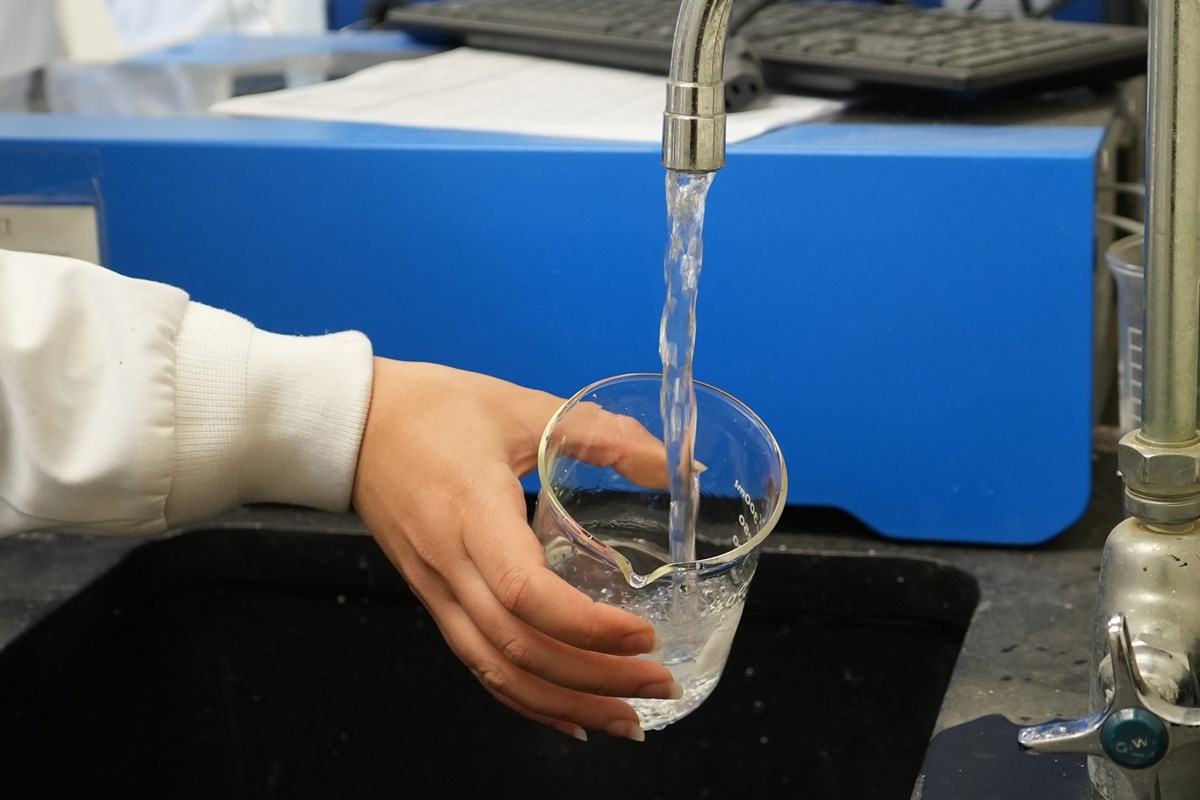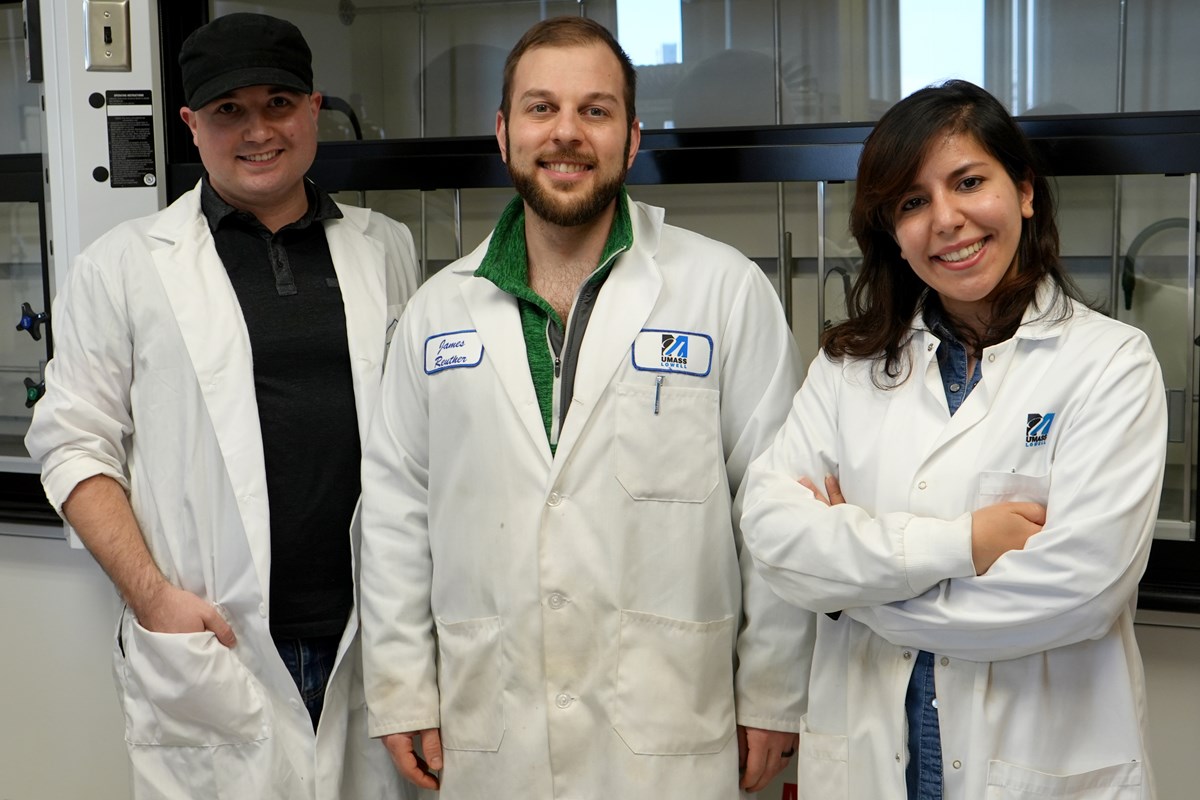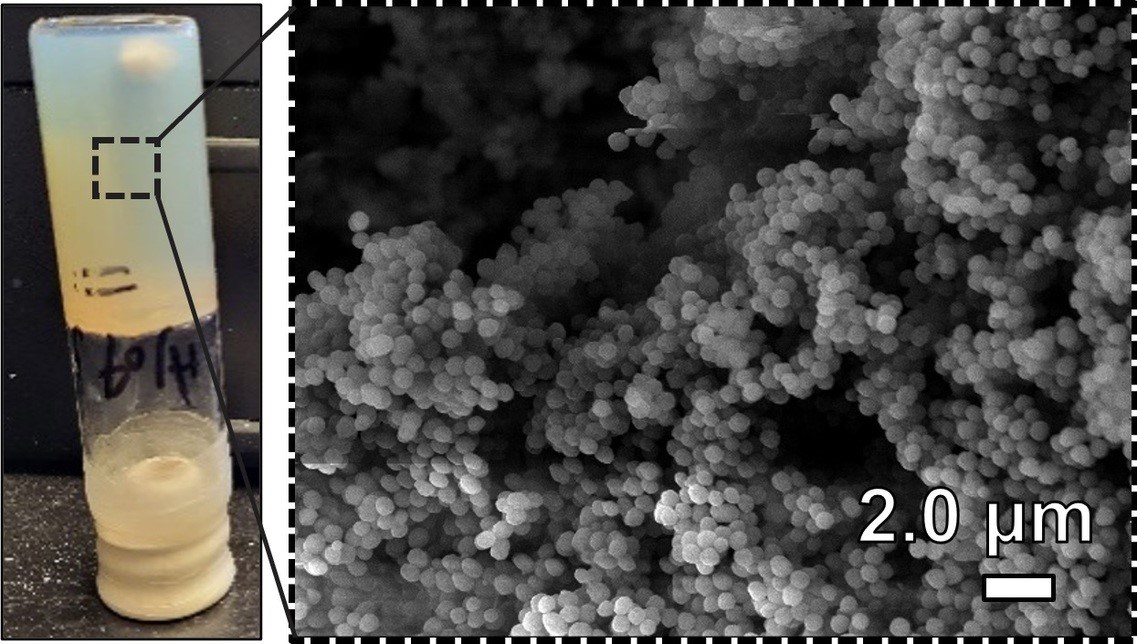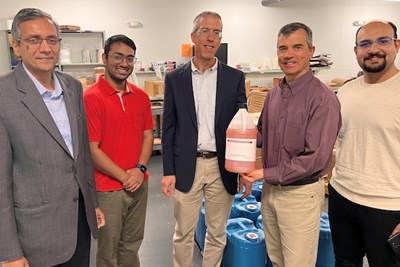Chemistry Asst. Prof. James Reuther Receives Grants to Improve Upon Filtration System
 Image by Brooke Coupal
Image by Brooke Coupal
02/28/2024
By Brooke Coupal
Harmful chemicals may be lurking in our drinking water, and Chemistry Asst. Prof. James Reuther wants to filter them out.
Reuther and his research group are developing a sustainable water filtration system that can remove per- and polyfluoroalkyl substances (PFAS), which are long-lasting chemicals linked to harmful health effects. The project is being funded by grants totaling nearly $85,000 from the U.S. Geological Survey and the Massachusetts Technology Transfer Center.
“PFAS is one of the biggest environmental concerns of our time,” Reuther says. “We need new ways to get rid of the pervasive chemicals in a very efficient manner.”
Since the 1940s, PFAS have been used in a wide variety of products, from nonstick cookware to firefighting foam. Scientists later discovered that exposure to PFAS may lead to increased cancer risks, decreased fertility and several other health issues. Federal and state agencies have taken steps to protect communities from exposure, but risks remain because PFAS, which are often referred to as forever chemicals, persist in the environment and the body.
 Image by Brooke Coupal
Image by Brooke Coupal
“PFAS have this exceptional stability, so it takes massive energies to break them down,” Reuther says. “They’re so pervasive – used so often, and literally everywhere. You can test the blood of individuals all across the country, and there’s almost a guarantee that you’ll find PFAS.”
People can be exposed to PFAS through drinking water, which becomes contaminated when the chemicals enter the environment, such as at firefighter training sites.
To filter PFAS out of the water, Reuther and his team created a gel by linking together polymers, which are chemical compounds consisting of bonded molecules. The linked polymers naturally form voids, which trap pollutants as water moves through.
Traditionally, activated carbon is used to remove PFAS and other pollutants from the water, as it has a similar porous nature, but it lacks a major benefit found in the filtering gel created by Reuther and his team.
“These gels are adaptable, meaning we can give them specific properties (by changing their polymer structure) so that they target specific pollutants to be removed from the water,” says Shayesteh Tafazoli, a polymer science Ph.D. student working in Reuther’s lab.
 Image by Courtesy
Image by Courtesy
The gel, pictured on the left, filters out PFAS by trapping the chemicals in naturally formed voids, as seen in the microscopic image of the gel on the right.
The gels are also a sustainable alternative to activated carbon filters, which need to be thrown away once they become filled with pollutants. The researchers can open the gel and remove the PFAS by applying a stimulus like ultraviolet light. The PFAS can then be properly disposed of and the gel reused.
“The sustainability aspect is the most enticing piece of this. We don’t want to be adding to the problem,” says Dylan Shuster, a sustainable chemistry Ph.D. student working in Reuther’s lab.
The researchers are looking at ways to improve the filtering gel. They are exploring the possibility of decomposing PFAS on the material itself, as well as ways to remove heavy metals and other contaminants from water.
“We are not going to stop here,” Tafazoli says.


